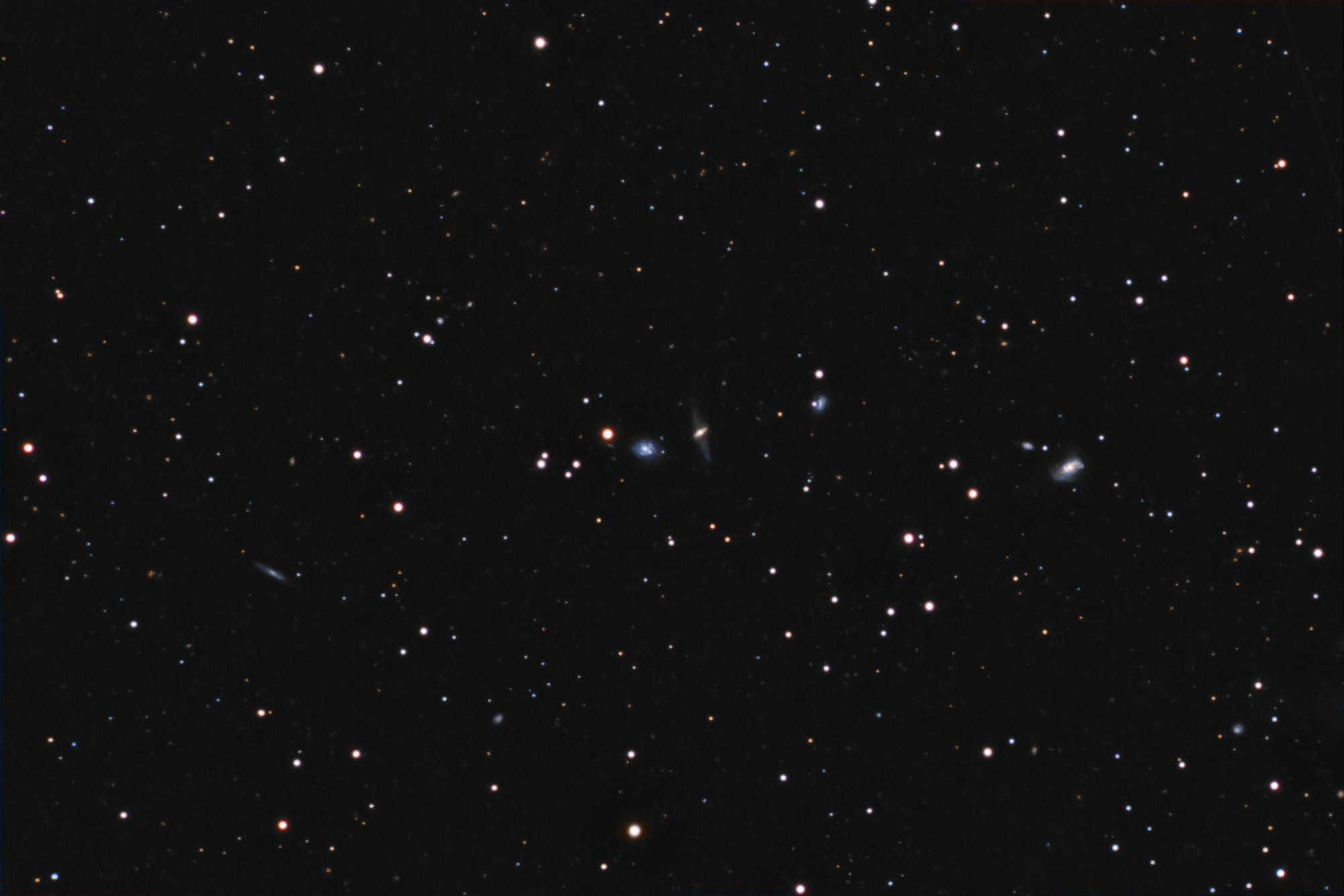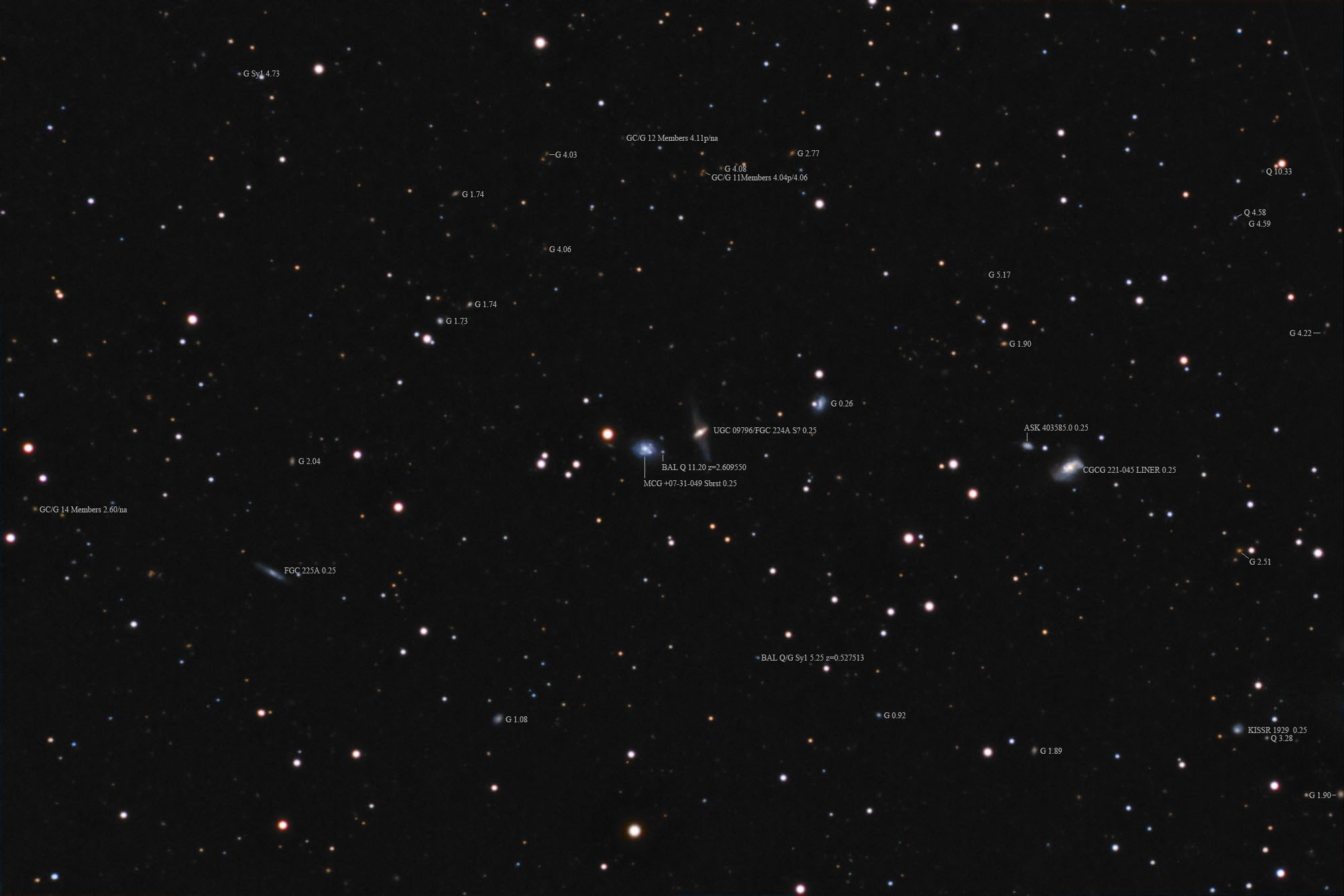| Description | Images |
Object name: IIZw073Designation(s): IIZw073, UGC09796, II Zw 073 is a very strange pair of galaxies in northeastern Bootes about a quarter billion light-years from us. Individually they are UGC 9796 and MCG +07-31-049. At that distance, you might not think there is much to see but the western galaxy UGC 9796 is a polar ring galaxy with a huge polar ring. While the galaxy itself is rather small with a diameter of its spiral disk being 28,000 light-years across the polar ring is about 115,000 light-years across. Its polar ring is 4 times the size of the galaxy. A very strange situation indeed. The UGC's original entry in 1973 reads: "Diffuse 'spindle' (dwarf?) with elongated 'core', probably superimposed companion". This was before polar ring galaxies were really known so the confusion isn't surprising. More surprising to me is that it is an entry in the Flat Galaxy Catalog! It is listed in the addenda catalog as FGC 224A (the "A" identifies it as an entry in the addenda catalog Apparently they are considering the polar ring the plane of the galaxy. Even then the length is only about 4 times the width, not 7 times needed to make the FGC. Related Designation(s):2MASS J15155630+4310004, 2MASX J15155627+4310001, ASK 403591.0, CGPG 1514.2+4320, CGPG 1514.2+4320 NED02, ECO 11904, FGC 224A, II Zw 073, II Zw 073 NOTES02, IIZw073, MAPS-NGP O_223_0047898, MCG +07-31-048, NPM1G +43.0298, NSA 069295, PGC 054461, PRC A-06, SDSS J151556.30+431000.4, SDSS J151556.30+431000.5, UGC 09796, UGC09796, [TTL2012] 539597, | Permanent link: https://images.mantrapskies.com/catalog/OTHER/IIZw073-UGC09796/UGC9796L4X10RGB2X10.JPG |


